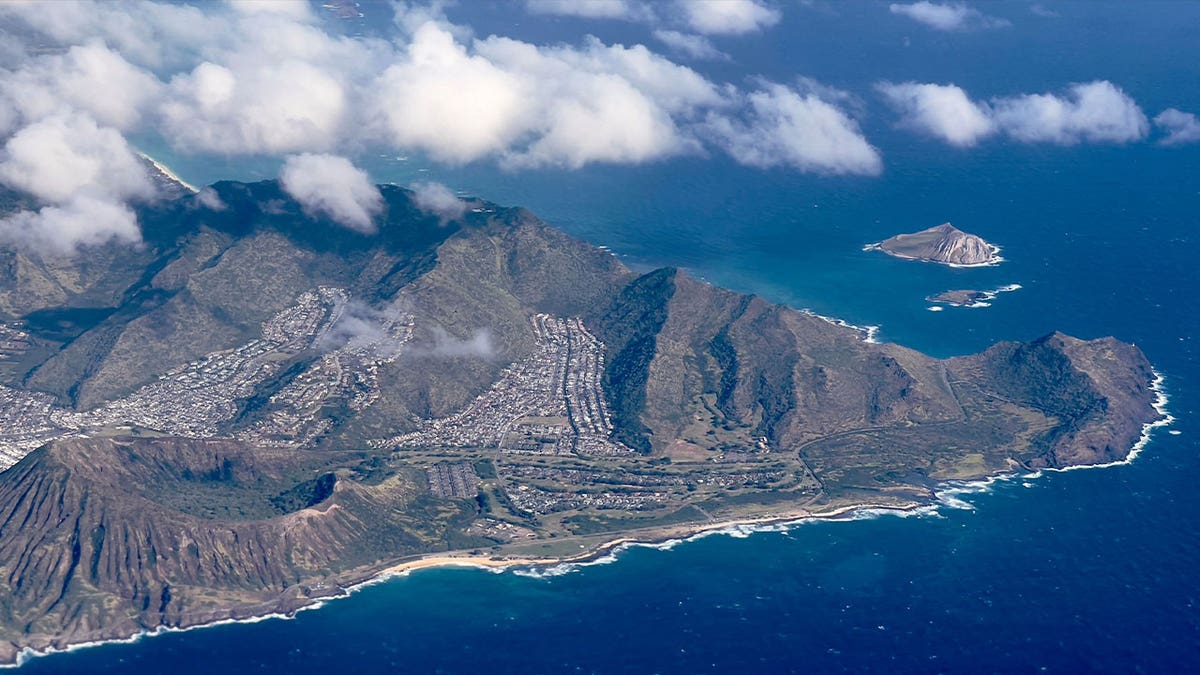Hawaii tourists rescued after following GPS directions into boat harbor
A Hawaii sailboat crew on Saturday rescued two people in a vehicle that drove down a boat ramp into water in Kailua-Kona. (Christie Hutchinson via Storyful)
- In November, about 1,300 gallons of a firefighting foam used to suppress fires caused by flammable liquids were spilled near Pearl Harbor in Hawaii.
- The fire suppressant, which contained a class of chemicals that degrade slowly in the environment known as PFAS, spilled out a fuel facility and onto nearby soil and a paved access road in Hawaii.
- The Hawaii disaster was caused by a maintenance contractor who did not install an air vacuum valve to a foam system properly, U.S. military officials said.
An investigation found that a spill of about 1,300 gallons of fire suppressant at a fuel facility in Hawaii was caused by a maintenance contractor improperly installing an air vacuum valve, U.S. military officials said Friday.
Aqueous Film Forming Foam, which is used to suppress fires caused by flammable liquids, contain PFAS, a class of chemicals that are slow to degrade in the environment.
The firefighting foam liquid concentrate was spilled in November at the Red Hill Bulk Storage Facility near Pearl Harbor. The concentrate pooled on the floor inside the facility and then seeped under a door and onto a paved access road and soil, the military said.
US FIGHTER JET CRASHES NEAR MAJOR MILITARY BASE IN SOUTH KOREA
The contractor improperly installed an air vacuum valve to the foam system in April 2022, the military said in a statement. The individual also failed to disable the foam concentrate pumps from automatically starting prior to conducting fire suppression system testing on Nov. 29, 2022, which cause the uncontrolled discharge.
The statement said, "stricter safeguards and more assertive Navy oversight should have been in place to reduce the risk of this type of mishap."

An aerial view shows eastern Oahu island, Hawaii, on Feb. 23, 2022. A maintenance contractor who did not install an air vacuum valve to a foam system properly caused 1,300 gallons of fire suppressant to spill near Pearl Harbor in Oahu, Hawaii. (DANIEL SLIM/AFP via Getty Images)
In 2021, jet fuel spilled from a drain line at the Red Hill Bulk Fuel Storage Facility. It flowed into a drinking water well and then into the Navy’s water system, which serves 93,000 people in and around Joint Base Pearl Harbor-Hickam. Nearly 6,000 people sought medical attention, complaining of ailments such as nausea, headaches and sores. The military put about 4,000 families in hotels for several months.
The spills have contributed to distrust of the military in the community.
CLICK HERE TO GET THE FOX NEWS APP
Navy Vice Adm. John Wade apologized at a news conference announcing the findings of the investigation into the firefighting foam spill, Hawaii News Now reported.
Navy groundwater monitoring sample results in the affected area after the November spill showed no exceedances of PFAS based on state and federal screening levels, the military said.
PFAS — an abbreviation for perfluoroalkyl and polyfluoroalkyl substances — were developed as coatings to protect consumer goods from stains, water and corrosion. Studies of lab animals given large amounts of PFAS have found that some of the chemicals may affect growth and development, reproduction, thyroid function, the immune system and the liver.






















